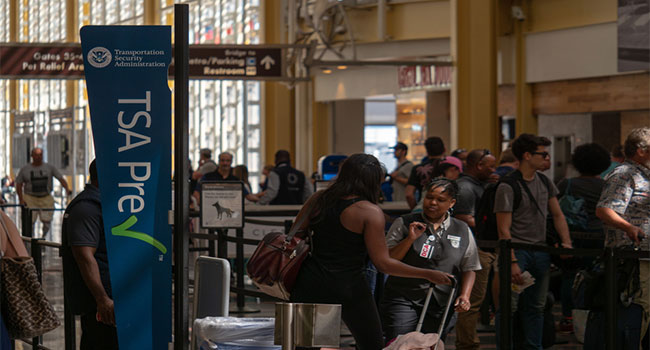
TSA Sets Up 'Innovation Checkpoint' at Las Vegas Airport To Test Security Tech
Among the technology being tested at a TSA checkpoint in Vegas: computed tomography machines, credential authentication technology for faster ID checks and a new body scanner.
- By Haley Samsel
- Sep 06, 2019
The Las Vegas airport has become a “petri dish” for testing out new security technology from the TSA’s lab, including an enhanced body scanner and new credential authentication software aiming at speeding up ID checks.
In the basement of McCarran International Airport, the TSA has set up an “innovation checkpoint” aimed at testing new screening practices, USA TODAY reported. Agents screen only about 200 passengers an hour, as compared to the 1,200 passengers typically screened at other checkpoints, so that they can better understand the advantages and drawbacks of the newly developed technology.
The three main differences at the checkpoint include:
-
Laptops stay in the bag thanks to new computed tomography machines, which give 3D images of carry-on bags similar to cat scans. One machine allows agents to virtually life a laptop or other items out of a carry-on for closer inspection on the screen. Passengers still remove liquids from their bag in this scenario. The TSA is already planning to roll out about 300 CT machines for use in airports later this year.
-
Credential authentication technology (CAT) allows travelers to hand over their ID (without showing a boarding pass) to an officer, who inserts it into a machine. The machine verifies the ID, and through a connection to the TSA’s Secure Flight database, lets the officer know if you have TSA PreCheck and that you have a ticket to fly that day. According to USA TODAY, another CAT machine with a camera is equipped with facial recognition and takes photos at the checkpoint to match with the passenger’s ID. That machine is being tested at a regular TSA lane at the airport.
-
Faster trips through body scanners are what the TSA is aiming for with its Rohde & Schwarz body scanner that uses millimeter wave radio frequency technology. Passengers hear a beep when the image is taken rather than a whirring sound that is typically heard with the current scanners.
All machines and technology have already been approved by the TSA, according to Jose Bonilla, the director of the TSA’s Innovation Task Force. He told USA TODAY that the current testing is part of the certification process before the machines are rolled out to other airports.
"We're not just focusing on the next shiny hardware,” Bonilla said. “We're focusing on processes. We're focusing on effectiveness, efficiency and utilizing those passengers that travel through those areas to give us feedback.''
Right now, the checkpoint in the basement of Terminal 3 is open from 10 a.m. to 2 p.m. on Sunday through Thursday. United Airlines passengers traveling during those times are sent to the checkpoint and notified about it a day before their flight. Passengers can choose to go through the main security checkpoint if they prefer, according to a spokesperson.
It’s yet to be determined if all of the technology being tested in Vegas, which was selected due for the airport’s large size and variety of business and vacation travelers, will be implemented at airports across the U.S. The 3D bag scanners will come to cities later this year, but the future of the rest of the tech depends on test results and the accuracy of its security findings, according to the TSA.
About the Author
Haley Samsel is an Associate Content Editor for the Infrastructure Solutions Group at 1105 Media.